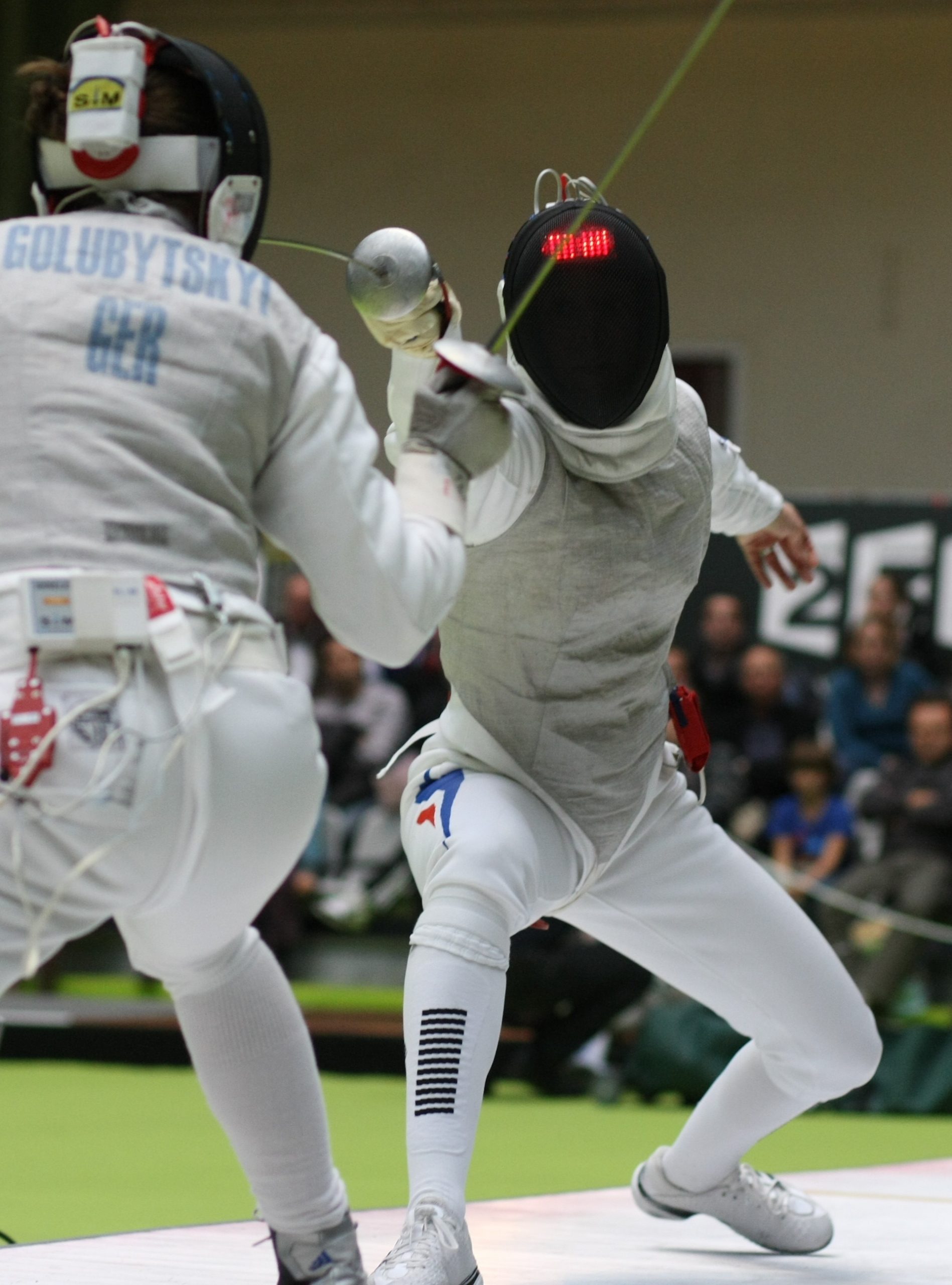Fencing is a sport that requires precision, agility, and strategy. One of the most important techniques in fencing is the thrust, also known as the lunge. It is a quick and powerful movement that allows fencers to score points by hitting their opponent with the tip of their weapon. Mastering the fencing thrust is essential for success in this sport, but it takes time, practice, and proper technique. In this guide, we will break down the basics of fencing thrust and provide tips and drills for beginners to improve their skills.
Understanding the Basics of Fencing Thrust
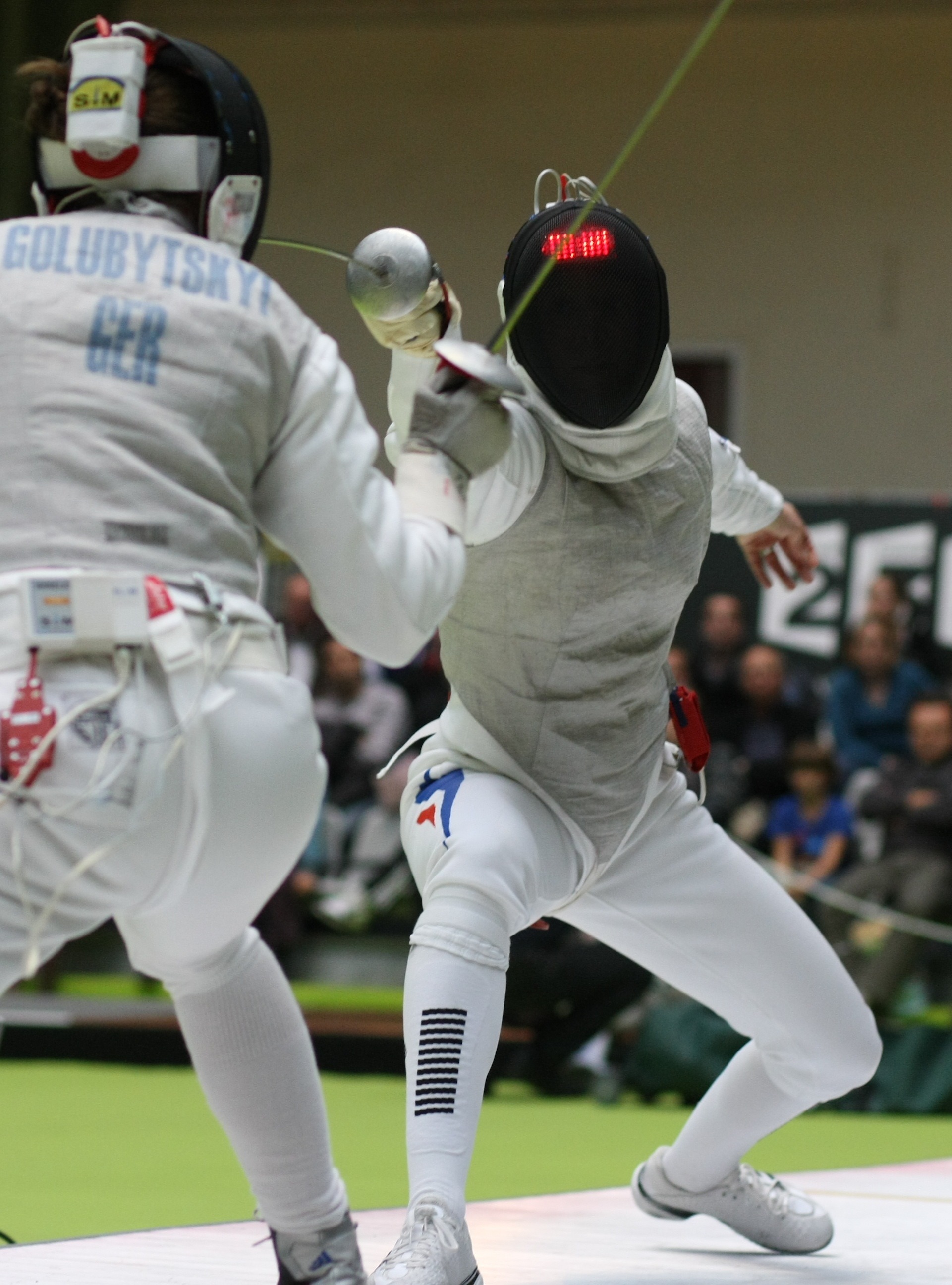
Before diving into the techniques and strategies of fencing thrust, it is important to understand the basic principles behind this movement. The thrust is a forward extension of the arm and weapon, using the momentum of the body to propel the tip of the weapon towards the target. It is a quick and explosive movement that requires coordination between the upper and lower body.
The Three Phases of Fencing Thrust
There are three phases to a fencing thrust: preparation, execution, and recovery.
- Preparation: This phase involves getting into the proper stance and positioning the weapon for the thrust. The fencer should have their lead foot pointed towards their opponent, with their back foot slightly angled to the side. The weapon should be held at waist level, with the arm extended and the elbow slightly bent.
- Execution: In this phase, the fencer will use their legs to push off the ground and propel their body forward. At the same time, they will extend their arm and weapon towards the target. The goal is to hit the opponent with the tip of the weapon while maintaining balance and control.
- Recovery: After the thrust has been executed, the fencer must quickly return to their starting position. This involves bringing the back foot forward and regaining balance before preparing for the next move.
Proper Body Alignment and Posture
In order to execute a successful fencing thrust, proper body alignment and posture are crucial. The fencer should maintain a straight line from their lead foot to their back foot, with their weight evenly distributed between the two. The upper body should be upright, with the shoulders relaxed and the head facing forward. The arm holding the weapon should be extended but not locked, with the elbow slightly bent to allow for flexibility and control.
Mastering the Techniques of Fencing Thrust
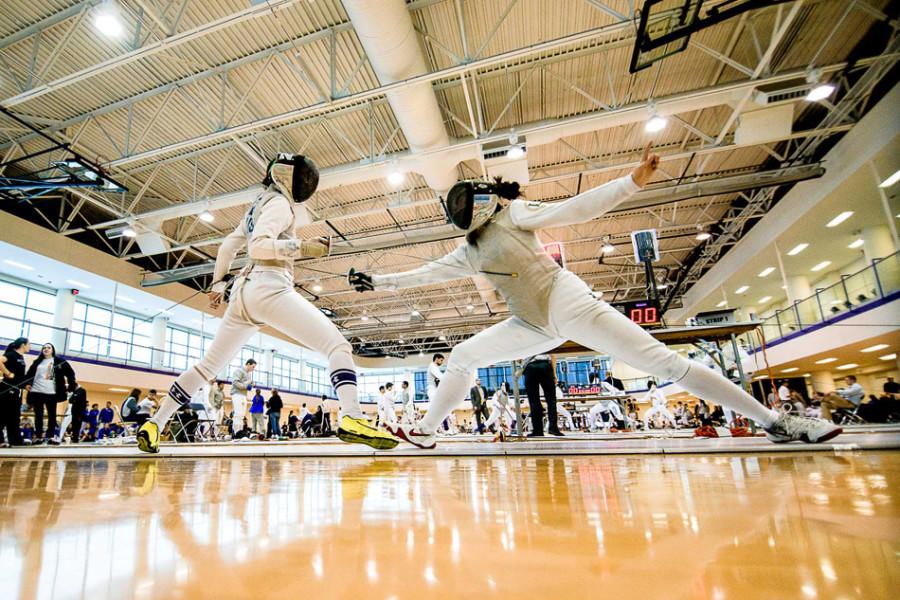
Now that we have covered the basics of fencing thrust, let’s dive into the techniques that will help you master this movement.
Arm Extension and Retraction
The key to a powerful and precise fencing thrust is proper arm extension and retraction. When extending the arm, the fencer should focus on pushing the weapon towards the target while keeping the wrist and fingers relaxed. This will allow for a quick and fluid movement. As the arm extends, the fencer should also push off the ground with their legs to generate more power.
Once the thrust has been executed, the arm must quickly retract to its starting position. This involves pulling the weapon back towards the body while maintaining control and balance. It is important to avoid overextending the arm, as this can leave the fencer vulnerable to counterattacks.
Targeting and Accuracy
In order to score points in fencing, the fencer must hit their opponent with the tip of their weapon. This requires targeting and accuracy. Beginners should start by aiming for the chest or torso area, as it is the largest target and easier to hit. As they become more advanced, they can aim for smaller targets such as the arms or legs.
To improve accuracy, fencers can practice hitting a target on a wall or use a training partner to simulate an opponent. It is important to focus on the tip of the weapon and follow through with the movement, rather than just poking at the target.
Safety Measures for Fencing Thrust
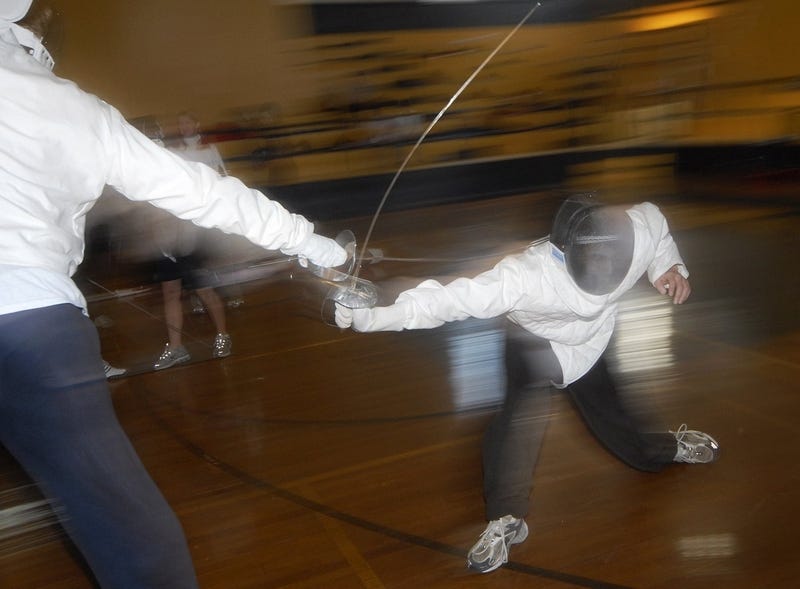
As with any sport, safety is a top priority in fencing. The following measures should be taken to ensure the safety of both fencers during thrusting:
- Always wear proper protective gear, including a mask, jacket, and gloves.
- Keep the weapon pointed towards the ground when not in use.
- Do not thrust at an opponent who is not wearing proper gear or is not ready to fence.
- Avoid excessive force when executing a thrust.
- If a hit is made, immediately stop the thrust and return to starting position.
Common Mistakes to Avoid in Fencing Thrust
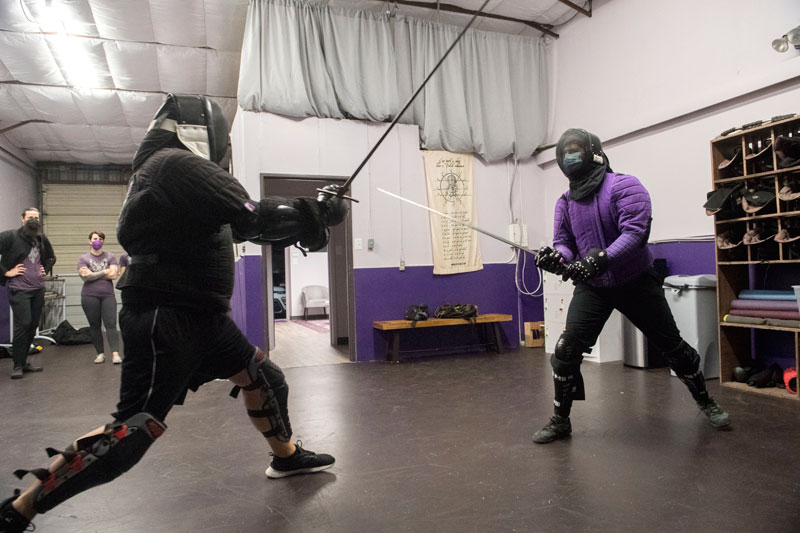
As with any new skill, it is common to make mistakes when learning fencing thrust. Here are some common errors to watch out for and how to correct them:
Overextending the Arm
As mentioned earlier, overextending the arm can leave a fencer vulnerable to counterattacks. To avoid this mistake, focus on keeping the elbow slightly bent and using the legs to generate power instead of relying solely on the arm.
Lack of Balance and Control
Fencing thrust requires coordination between the upper and lower body. If a fencer is off-balance or lacks control, their thrust will not be effective. To improve balance and control, practice drills that focus on footwork and body alignment.
Not Following Through with the Movement
Another common mistake is not following through with the thrust. This means that the fencer does not fully extend their arm and weapon towards the target, resulting in a weak and inaccurate thrust. To correct this, focus on pushing the weapon towards the target and maintaining control until the arm is fully extended.
Fencing Thrust Drills for Beginners
Practice makes perfect, and the same goes for fencing thrust. Here are some drills that beginners can do to improve their skills:
Wall Target Drill
This drill helps improve accuracy and targeting. Find a wall or use a target on the ground, and practice hitting it with the tip of your weapon. Start with larger targets and gradually decrease the size as you become more accurate.
Partner Thrusting Drill
This drill involves working with a partner to simulate an opponent. One partner will hold their weapon in a defensive position while the other practices thrusting towards the target. Switch roles after each round to give both partners a chance to practice.
Footwork and Thrust Drill
Footwork is crucial in fencing, and this drill combines footwork with thrusting. Start in a stationary position and practice extending the arm and weapon while simultaneously taking small steps forward. This will help improve balance, control, and coordination between the upper and lower body.
How to Improve Your Fencing Thrust Precision
Precision is key in fencing, and there are several ways to improve your thrust precision:
- Practice drills that focus on accuracy and targeting.
- Work on arm extension and retraction to ensure a straight and fluid movement.
- Focus on footwork and body alignment to maintain balance and control.
- Visualize your movements before executing them to improve muscle memory.
The Role of Footwork in Fencing Thrust
As mentioned earlier, footwork is crucial in fencing and plays a significant role in the execution of the thrust. Here are some tips for improving footwork in fencing thrust:
- Keep the feet shoulder-width apart and pointed towards the opponent.
- Use small, quick steps to generate power and maintain balance.
- Avoid crossing the feet, as this can leave a fencer vulnerable to attacks.
- Practice different footwork patterns to improve agility and coordination.
Fencing Thrust Strategies for Different Opponents
In fencing, it is important to adapt to different opponents and their styles. Here are some strategies for fencing thrust against different types of opponents:
Aggressive Opponent
An aggressive opponent will often try to overpower their opponent with quick and forceful movements. To counter this, focus on maintaining control and balance while executing your thrusts. Use small, quick steps to avoid being caught off guard.
Defensive Opponent
A defensive opponent will often try to block or parry your thrusts. To overcome this, vary the timing and direction of your thrusts to catch them off guard. You can also use feints to create openings for your thrusts.
Taller Opponent
Fencing against a taller opponent can be challenging, as they have a longer reach. To combat this, focus on footwork and agility to get in close and execute your thrusts. You can also use low line attacks, aiming for the legs or feet, to take advantage of their height.
Training Tips for a More Powerful Fencing Thrust
In addition to practicing drills and techniques, there are other ways to improve the power and effectiveness of your fencing thrust:
- Strengthen your core and leg muscles through exercises such as squats, lunges, and planks.
- Work on your reaction time and explosiveness through plyometric exercises.
- Incorporate resistance training with a resistance band to increase arm strength.
- Practice visualization techniques to improve muscle memory and mental focus.
Equipment Needed for Fencing Thrust
To practice fencing thrust, you will need the following equipment:
- Fencing mask: Protects the face and head from hits.
- Fencing jacket: Provides padding and protection for the upper body.
- Fencing glove: Protects the hand and fingers.
- Fencing weapon: A foil, epee, or sabre.
- Fencing shoes: Lightweight and flexible shoes designed for fencing.
- Protective gear: Optional but recommended for added protection, including chest protectors and knee pads.
Conclusion
Fencing thrust is an essential technique in the sport of fencing. It requires coordination, precision, and proper technique to execute successfully. By understanding the basics, mastering the techniques, and practicing drills, beginners can improve their skills and become more confident in their fencing thrust. Remember to always prioritize safety and continue to train and improve your skills to become a master of the fencing thrust.
